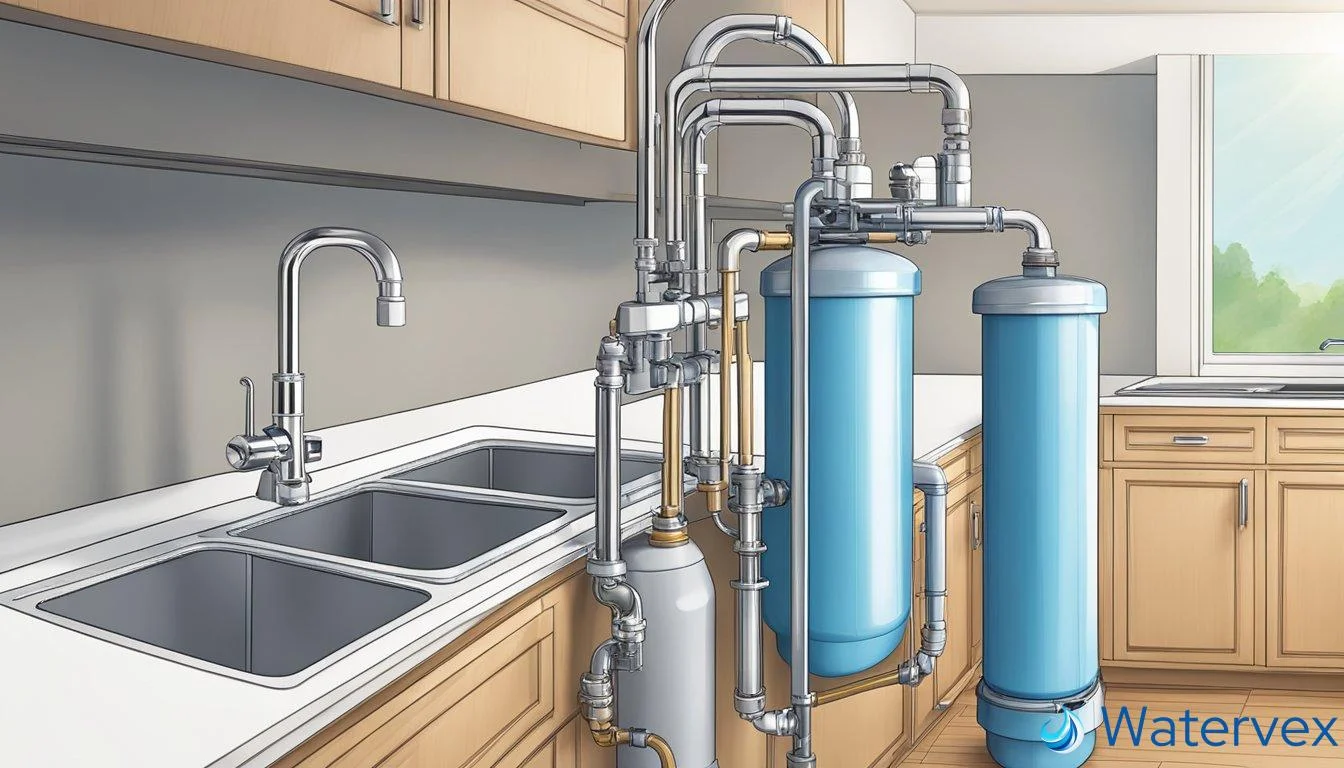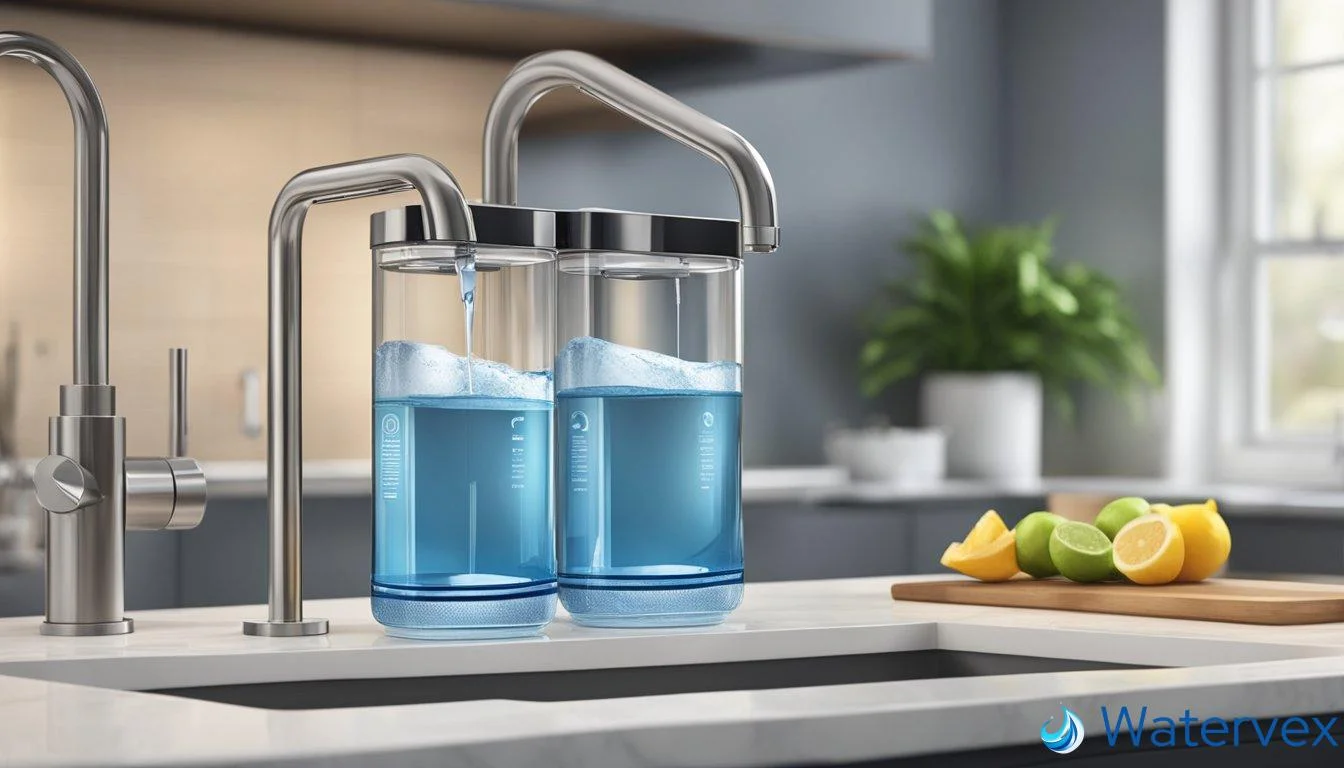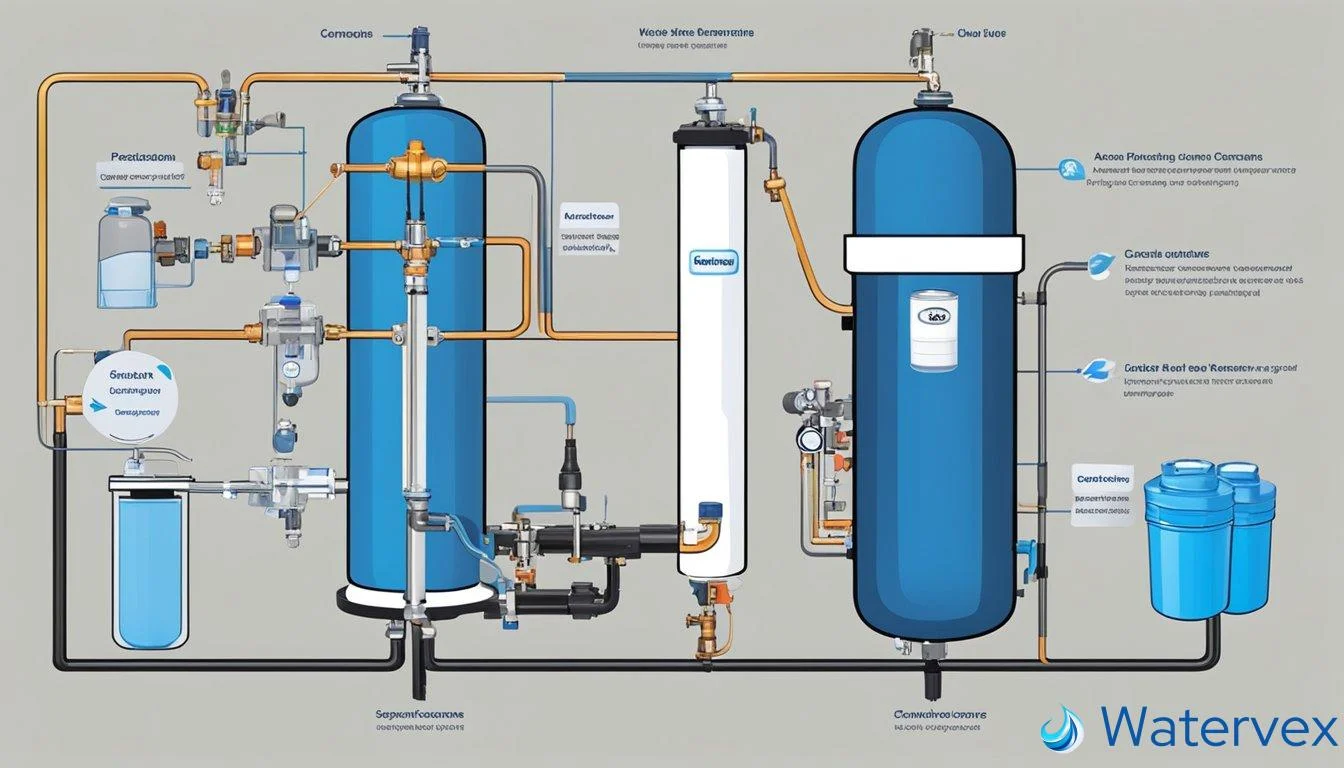Choosing between a water softener and a reverse osmosis system is an important decision for ensuring the quality of your home’s water supply. A water softener is specifically designed to remove minerals like calcium and magnesium from hard water, which can lead to scale buildup and interfere with soap’s effectiveness. On the other hand, a reverse osmosis system offers a broader purification solution, removing a variety of contaminants including dissolved solids, certain chemicals, and some bacteria, thus providing safe, high-quality drinking water.

Understanding the nuances between the two systems is crucial. A water softener typically uses an ion-exchange process, substituting the minerals with sodium ions, which alleviates the common issues of hard water. A reverse osmosis system, however, utilizes a semipermeable membrane to filter out impurities, with additional stages that may include sediment and carbon filters.
Key Takeaways
- Water softeners specifically target mineral removal to prevent scale and increase soap efficiency.
- Reverse osmosis systems provide extensive water purification, tackling a wide spectrum of contaminants.
- Choosing the right system depends on your specific water quality needs and desired level of purification.
Water Softener Basics
Understanding water softeners is essential for managing hard water issues in your home. In essence, they are devices that convert hard water into soft water.
Benefits of Water Softeners
Water softeners, through a process known as ion exchange, primarily tackle the problem of hardness in water. This hardness is due to minerals such as calcium and magnesium, which can cause scale buildup in plumbing and on appliances. By using sodium ions to replace these hard minerals, a water softener can extend the lifespan of your appliances and maintain efficient plumbing systems.
- Avoids Scale Buildup: The ion-exchange process in the mineral tank negates the negative effects of hard water by mitigating scale formation.
- Enhanced Appliance Efficiency: Appliances last longer and run better when scale is prevented, saving potential costly repairs.
Key Considerations and Maintenance
When selecting and maintaining a water softener, several factors must be taken into account to ensure its longevity and effectiveness. The cost of a water softener includes the initial price and ongoing maintenance requirements such as salt for the brine tank.
- Regular Salt Refills: Keep your brine tank filled with salt, which is required for the ion-exchange process.
- Resin Bed Flushing: Over time, the resin bed in your resin tank needs to be cleaned to maintain the quality of soft water.
Regular maintenance checks are crucial for optimal operation and to detect any potential issues early on, preventing major malfunctions or efficiency losses over time.
Understanding Reverse Osmosis Systems

Reverse osmosis systems efficiently remove a variety of impurities from water, offering you quality drinking water. They utilize a semi-permeable membrane that filters out dissolved solids and other contaminants.
Pros of RO Systems
- Purified Water: An RO system provides you with highly purified water by removing up to 99.9% of dissolved solids.
- Removes Impurities: Effective at filtering out a spectrum of contaminants including certain bacteria and pesticides.
- Taste and Odor: The multi-stage filtration can improve water taste and remove odors.
- Mineral Control: While it reduces essential minerals, it can prevent excessive mineral intake.
Filters and semi-permeable membranes are crucial for these systems; they require routine replacement to maintain efficiency. The RO membrane is central to the system, as it selectively allows water molecules to pass while blocking larger molecules.
Cons and Practical Considerations
- Cost: The initial cost for an RO system can be significant, while ongoing maintenance also incurs costs.
- Wastewater: RO systems produce wastewater in the filtration process, potentially affecting your water bill.
- Slow Filtration Rate: The process can be slow, which is why a storage tank is often necessary.
- Space: They require space under your sink or elsewhere for installation.
Installation can be complex for some homeowners, but professional installation ensures that the system operates efficiently. The efficiency of an RO system is a balance of water quality and wastewater produced.
While some may worry about the minerals removed from water, often the benefits of purified water can outweigh this aspect, considering the average diet and mineral sources. It’s important to factor in the potential health gains of eliminating harmful contaminants as opposed to the minimal loss of minerals.
Comparing Solutions: RO vs Softeners

When you’re choosing between a reverse osmosis (RO) system or a whole house water softener, think about the intended outcome for your water. RO systems are like a fine sieve for your water, removing a wide range of contaminants including hardness minerals like calcium and magnesium. A water softener, conversely, specifically targets those hardness minerals, preventing them from causing scale buildup.
Reverse Osmosis Systems:
- Purify tap water, removing small particles and various contaminants.
- Provide water that’s generally better for drinking.
- May require pre-filtration if hard water is an issue.
- Involve more complex maintenance due to numerous components, such as filters and the RO membrane.
Water Softeners:
- Condition your water, removing or altering minerals that cause hardness.
- Help extend the life of appliances by preventing scale.
- Typically use salt for ion exchange, requiring occasional refill.
- Often involve simpler maintenance when compared to RO systems.
Considering cost savings, a water softener alone might reduce the likelihood of expensive repairs from scale damage. If protecting the environment matters to you, ponder the waste water and the use of salt in softeners. Should there be concerns about health risks from contaminants like lead or chlorine, RO offers peace of mind by reducing these from your tap water.
Think about maintenance requirements as well. RO systems might need more frequent attention than softeners, specifically when it comes to filter changes. Still, they both present distinct benefits:
| Criteria | Reverse Osmosis | Water Softener |
|---|---|---|
| Primary Function | Purifies water | Conditions hard water |
| Maintenance | More complex, frequent filter changes | Simpler, salt replenishment |
| Environmental Impact | More wastewater generated | Uses salt |
| Health Advantages | Removes a broader range of contaminants | Reduces minerals causing water hardness |
In essence, your choice between RO and softeners should hinge on your specific needs—whether it’s purity for drinking or combating the effects of hard water throughout your home.

